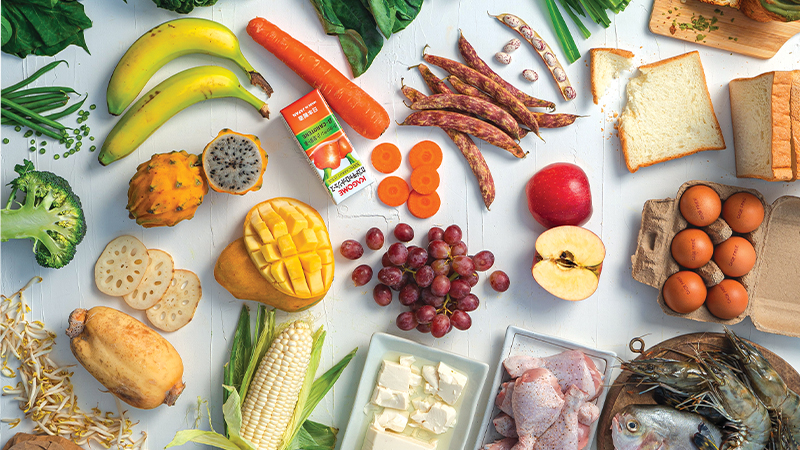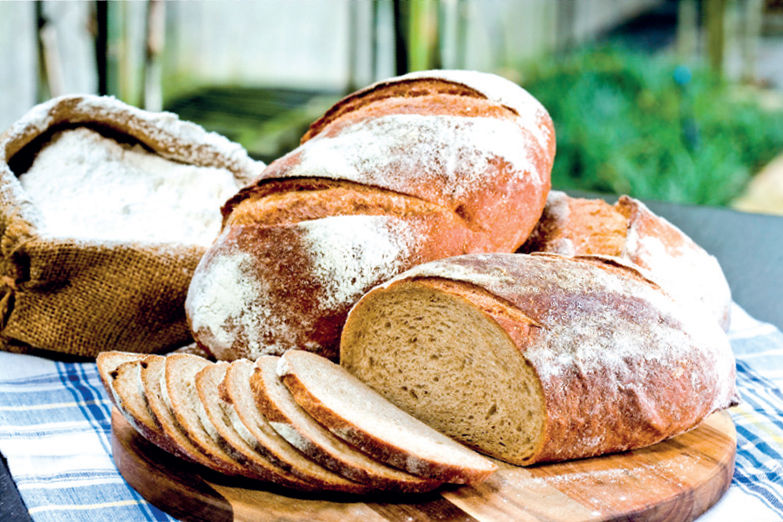Whether you’re a new expat here or you’re moving here soon, you’ve probably heard “Cold Storage” or “FairPrice” being mentioned in terms of supermarkets in Singapore. In fact, there are plenty of grocery stores and supermarkets here for picking up quality produce. There’s also a wide range of online groceries for delivery, if that’s easier. Some focus on great value food stuff, others specialise in premium meat, international fresh fruit or organic choices.
Grocery stores, online groceries and the best supermarkets in Singapore
OpenTaste Groceries Online
Buying organic produce in Singapore has traditionally come with a hefty price-tag, but not any more thanks to OpenTaste. They’re slashing the prices of all organic items, so you can get the best quality food at conventional prices. You can save between 25 to a whopping 41 percent on all produce from fresh fruit and vegetables, to dairy and meat.
This year, OpenTaste also became the first grocer to price match with FairPrice, Cold Storage and RedMart. This gives customers a guarantee to get double the difference back on all items.
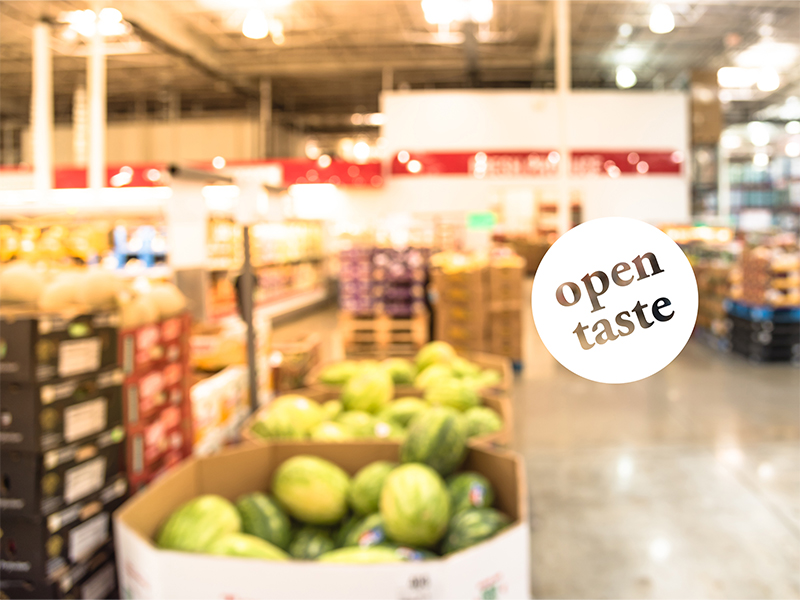
Order on the OpenTaste App or website before 11am for next-day delivery within a three-hour slot. With your membership of $3.99 a month, you’ll enjoy unlimited free shipping for orders above $49. Also, members can choose to receive a box of kampong eggs or a punnet of Australian broccoli free with every weekly order – bumping up your savings to an additional $182 per year!
Sasha’s Fine Foods Online Groceries
Singapore’s first online grocer Sasha’s Fine Foods continually delivers an extensive range of carefully sourced, quality products from farmers, fisheries and producers in Singapore and all over the world.
The brand enjoys an incredibly loyal following of customers who keep coming back for the taste and quality of Sasha’s produce and exceptional customer service.

Designed with busy families in mind, the website allows for a stress-free shopping experience. You can add to your order after you’ve checked out, purchase ingredients directly from their extensive recipe pages and shop until 3pm for delivery before dinner.
You’ll also be told the exact time of your delivery and notified when your order is on its way to you – no waiting around required!
Little Farms Fresh Grocery Store
Since their first grocery store opening in Valley Point Shopping Centre in 2016, Little Farms has been meeting a growing demand for artisanal, curated and all-natural food offerings.
Buying directly from farmers and independent suppliers where possible is how the company ensures peak freshness, maintaining full traceability from farm to store. This approach and its unique selection of products have won Little Farms plenty of fans, from parents to millennials and other food-loving, health conscious consumers.
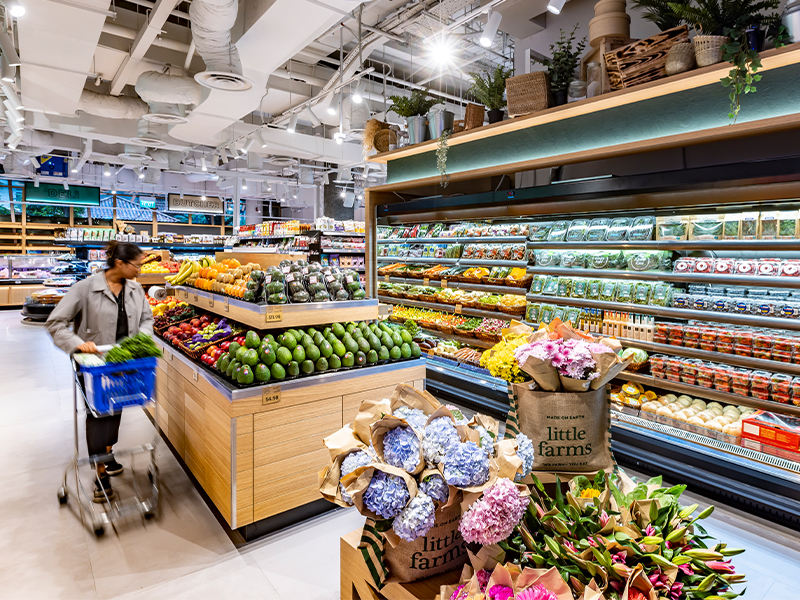
The pantry items and fresh fruit and produce available in-store and online include organic, gluten-free, free-range, vegan and ketogenic products. There’s also a brand new ready-to-heat meal range, featuring classics like Shepherd’s Pie, Chicken Cacciatore and Butter Chicken. These use the same high-welfare meats from O’Connor and Bostock Brothers as you can find at their butcher counters. Little Farms also offers over 200 top-quality wines from across the globe, working with small winemakers to provide exclusive labels at great value.
Order before 11am and enjoy same-day delivery Monday to Saturday. There’s free delivery on purchases above $100 and first-time users can get 20 percent off online orders with the code “WELCOME20” at checkout. Branches in River Valley, Katong, Tanglin, Serangoon Garden, Holland Village and Tanjong Pagar.
BeepBeep! Online Groceries
Promising to be the fastest delivery service in town, BeepBeep! customers can order their online groceries by phone and have them delivered straight to their door within 20 minutes of ordering. Wow!
The company offers a wide range of products, from fresh fruit and vegetables and pantry staples to international and expat favourites. It also has its own ever-expanding premium brand that’s not to be missed, and includes fresh juices, cut fruits, cheeses, cold cuts, pastas and more at very reasonable prices. The range also extends to high-quality ready-to-eat food, ranging from DIY salads to freshly baked sweet treats.
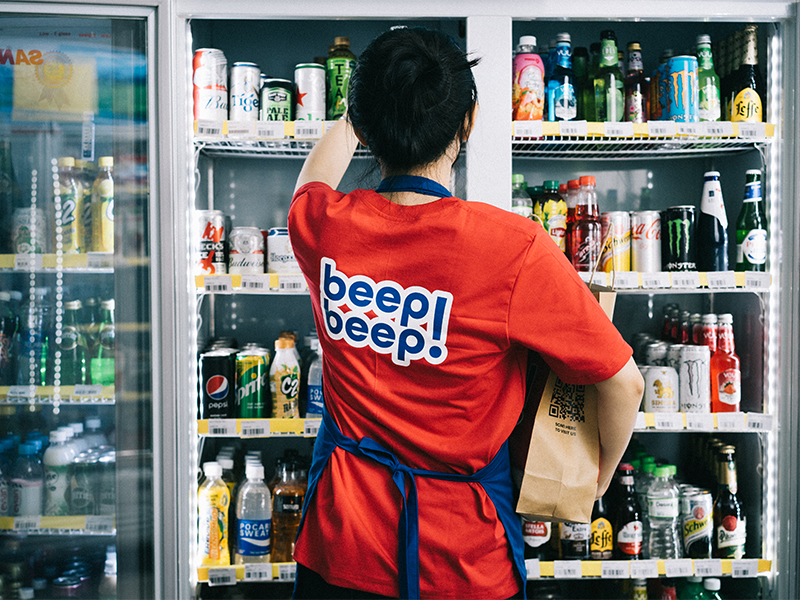
With a focus on quality and convenience, BeepBeep! is quickly gaining popularity among busy individuals and families who want to save time. The app can be downloaded from the Apple or Play Store.
Cold Storage Supermarket
Established in 1903, Cold Storage started with humble beginnings as a small depot, storing and selling mainly frozen meat from Australia. Now one of the best supermarkets in Singapore, this popular grocery store now has 47 branches across the island. Many of these are located in areas with large expat communities so you can stock up on your favourite treats from back home.
Shop a large range of international brands (even a Waitrose line!) imported directly, alongside organic fresh fruit and vegetables, as well as a full range of seafood, meat, alcohol, fresh fruit and vegetables, bread and more.
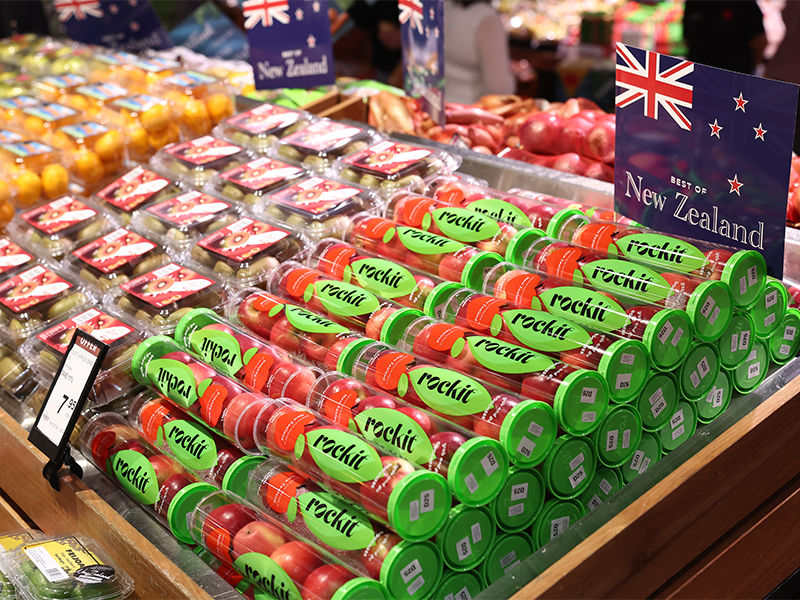
Visit the new CS Fresh and CS Fresh Gold stores for an enhanced shopping experience, with revamped interiors and highlights such as a premium Australian bakery, an artisanal cheese and charcuterie shop and the largest fresh organic range in Singapore. The yuu Rewards Club allows you to accrue points and be rewarded, too.
Prefer to shop from the best supermarket in Singapore online? You can get your favourite brands on Cold Storage’s website; don’t miss out on the weekly promotions – and free delivery with a minimum spend of $59.
Looking for more grocery stores? Here are a few other popular grocery stores and more of the best supermarkets in Singapore
FairPrice supermarkets and online groceries
FairPrice Finest has at least 15 outlets around major shopping centres and offers a wide selection of Western, Asian and local brands. At this Singapore supermarket chain, you’ll find fresh fruit and vegetables, organic produce, meat, poultry, fresh sushi (our healthy lunchtime fave!), fresh seafood, alcohol and more. FairPrice (without the Finest) grocery stores are also dotted all over the island. Smaller than their ‘Finest’ counterpart, they stock fewer Western brands and are therefore cheaper. Get a FairPrice store loyalty card to accrue points which are redeemable against purchases in store and for online groceries too.
Giant Supermarkets in Singapore
From large hyper-marts to small convenience stores, Giant supermarkets can be seen in most regions. This is a very competitively-priced supermarket in Singapore offering fresh fruit, vegetables and groceries. Some outlets also sell general merchandise, including clothing, furniture, toys, stationery and more. While cheap, Giant stocks a limited range of international products.
More grocery stores, online groceries and food delivery services
Grab
Have your favourite dishes, desserts, groceries and drinks delivered right to your doorstep in just a few taps using this must-have app. From Michelin-starred restaurants and neighbourhood pizzerias, to delicatessens with all the premium ingredients you could wish for and some of the best desserts in town, GrabFood and GrabMart will deliver on-demand or next day without you breaking a sweat.
Plus, sign up for a GrabUnlimited subscription for up to $3 off every GrabFood and GrabMart delivery and bonus vouchers every month. You can also get up to 30% off preferred merchants. Try GrabUnlimited free for the first month and then stay subscribed for $5.99 a month thereafter.
Avo & Co.
Avo & Co. was started by two brothers in 2017 after they found that the fresh fruit and vegetables on offer simply wasn’t up to their standards! In addition to poor quality vegetables, they felt there was a lack of variety. So they set out to offer a more interesting selection.
While you can shop groceries online for specific fresh fruits and vegetables, decision-weary customers can opt for a weekly box that features exciting combinations of seasonal produce. You can even select specific Asian and organic vegetable options.
The seasonal boxes are incredibly flexible. You can pause orders at any time and even swap out items that you’re not so keen on. Avo & Co. uses environmentally-friendly paper packaging.
Sheng Siong Grocery Store
These supermarkets in Singapore tends to fly under the radar, as its 50 or more stores are largely tucked away in the ‘heartland’ areas. Aside from very competitive prices, the main reason to visit is Sheng Siong is the huge selection of food stuff and quality fresh seafood, including frogs and live lobsters. It also stocks Western brands including dairy, alcohol, packaged food, toiletries and essential household products.
Foodpanda
We could all use a bit of joy following a long day of working, right? Squeezing past the crowds in supermarket aisles doesn’t sound like an ideal way to unwind after a tiring day! Pandamart (by foodpanda) allows you to prioritise your much needed me-time and shop a massive choice of groceries online for delivery within 30 minutes.
Meat Co. – free range and hormone-free meat
Meat Co. is an online butchery offering restaurant-standard chicken, lamb, beef and pork. They have over 20 years of experience supplying to restaurants and hotels in Singapore. You can expect the same high-quality meats from Australia, New Zealand and the US, delivered directly to your home. The team sources from small-scale producers and farmers that practise ethical farming. Online groceries include a variety of premium meats like free-range, barley-fed and hormone-free Wanderer beef from Australia. You’ll also find organic free-range chicken from New Zealand farm Bostock Brothers.
Purely Fresh – online groceries from wet and dry markets
Behind this online grocer is a team of entrepreneurs who have owned a variety of wet and dry markets since 1998. Everything you see on the site is sourced from reliable suppliers, farmers and distributors who value sustainable and hygienic production processes. The products are inspected by hand and checked for quality and freshness, before they’re packed and delivered. From healthy greens, seafood and meat to kitchen essentials, you’re bound to find what you need from the vast variety of items online.
Nourish – all-vegan groceries online
Save yourself the effort of constantly fishing through a sea of processed and unhealthy products by shopping on Nourish. This all-vegan virtual marketplace offers healthy, sustainable and plant-based products. You’ll find a wide range of vegan, organic and gluten-free products that are free of preservatives, nasties and even refined sugars. There’s also gourmet vegan cheese, snacks and dessert platters on Nourish.
If you’re looking for healthy, premium online groceries in Singapore, try Ryan’s Grocery. This gourmet food store has a wide selection of top-quality organic, gluten-, allergen- and preservative-free specialty produce, imported exclusively from Australia, Europe and elsewhere.
Huber’s Butchery – sausages made in-house, delicious cheeses and cured meats
This family-owned premium specialty store is a familiar favourite amongst locals and expats. Online grocery shopping here gives you a choice of over 100 varieties of chilled and cured meats, cheeses and gourmet groceries (available both online and in-house). The online shopping experience is quick, easy and fuss-free!
Baggie’s – South African-style hand-made boerewors and biltong!
This online grocery store offers a great combination of everyday meats for fuss-free meals, as well as speciality items that you can’t get elsewhere. Not sure where to begin? There’s a home cooking range with a wide selection of crowd favourites including mince, burgers, meatballs, chicken and steaks. Everything is prepared freshly on-site without additives or preservatives. Visit their store at Fortune Centre (190 Middle Road, #02-29) for air-cured meats such as biltong, droewors and cabanossi, and speciality sausages like boerewors.
The Fishwives – farm produce from Australia and NZ
For fresh, sustainable seafood and meat, check out The Fishwives. They source and imports directly from farmers in Australia and New Zealand. Shopping for online groceries in Singapore? You’ll also find a wide range of gourmet products including fresh cheeses, artisanal snacks like The Whole Kitchen’s nut mixes, and gluten-free loaves.
Le Petit Depot – amazing cheeses and wines from France
Stock up on French products without burning a hole in your wallet! Online store Le Petit Depot has been running since 2012. They a fantastic and affordable range of online groceries like organic fruits and veggies, chilled and frozen products, gluten-free and baby food, as well as beauty and household items.
Missing Spain – all you need to pretend you’re on holiday!
Planning a paella party or a lazy Sunday sangria soiree? If you’re having trouble looking for hard-to-find Spanish ingredients and wines, Missing Spain is one online grocery store to check out. This online grocery offers a range of imported products including premium cold cuts, cheese, preserved vegetables and seafood, and many other ingredients that are difficult to find outside of Spain.
The Meat Club – best cuts from Australia and New Zealand
Get quality Australian and New Zealand proteins, direct to your door! The Meat Club online butcher sources directly from trusted suppliers, who seal in the quality then air and sea freight their products to Singapore. No unnecessary steps or waste, just a responsible, conscious way to get your meat. Shop now for a $10 discount using the code “WELCOME10”, or subscribe and get up to 15% off your total basket and Free Mince for Life.
More options for online grocery stores in Singapore…
Fresh seafood
Song Fish: Free delivery when your order is above $100
Tankfully Fresh: Free delivery with a minimum order of $60
Apollo Marine: Free delivery for orders above $120
Organic groceries
Quanfa Organic Farm: Free delivery for orders above $60; otherwise, delivery costs $8
Organic Delivery: Free delivery with a minimum order of $100
Halal groceries
Nikmart Halal Frozen: Free delivery when you spend more than $39.90
Adam Halal: Free delivery with a minimum order of $100
CS Foods: Free delivery with a minimum order of $60
Shopping tips for supermarkets in Singapore
- You may need a dollar to release a trolley, which is ejected when the trolley is returned.
- In the seafood section, the fresh fish can be prepared to your liking. If you choose a whole fish, ask for it to be cleaned and/or cut into fillets. The bones will also be returned to you with the fish.
- Have Google at the ready – there are different names for many things.
Don’t feel like cooking? Get a takeaway or check out one of these great restaurants in Singapore! Plus, we’ve got 30 more fantastic vegetarian and vegan restaurants!

